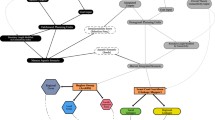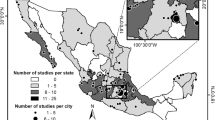Abstract
Habitat conservation plans (HCPs) permitted under Section 10(A) of the federal Endangered Species Act, have been increasingly used to overcome conflicts between urban development and species conservation. This article profiles one such HCP, the Coachella Valley (CA) Fringe-Toed Lizard Habitat Conservation Plan. The second HCP officially approved by the US Fish and Wildlife Service, the Coachella Valley case is frequently cited as a model for resolving conservation and development conflicts. The article begins with a discussion of the use of HCPs, and then provides a detailed discussion of Coachella Valley experience, its history, specific provisions, and success to date. A final section examines whether Coachella Valley does in fact represent a positive model. It is argued that the HCP has been less than fully successful and leaves unresolved a series of fundamental ethical and policy questions concerning the protection of endangered species.
Similar content being viewed by others
Literature Cited
Barrows, C. 1989. Monitoring report: Coachella Valley fringetoed lizard. Southern California area manager, The Nature Conservancy.
Beatley, T. 1990. Land development and protection of endangered species: A case study of the Coachella Valley habitat conservation plan. Prepared for the National Fish and Wildlife Foundation, February.
Beatley, T. 1991. Preserving biodiversity through the use of habitat conservation plans. Urban Land Institute, Washington, DC (in press).
Carpenter, C. C. 1963. Patterns of Behavior in the forms of the fringetoed Lizards.Copeia 2:406–412.
Coachella Valley Association of Governments. 1988. Coachella Valley area growth monitor, CVAG, Palm Desert.
Coachella Valley Association of Governments. 1989. Regional housing needs assessment. CVAG, Palm Desert.
Coachella Valley HCP (Habitat Conservation Plan) Steering Committee, 1985. Coachella Valley habitat conservation plan. June.
Cornett, J. 1983. Uma, the fringe-toed lizard.Pacific Discovery 36(April–June):1–10.
Defenders of Wildlife. 1987. Saving endangered species: Implementation of the Endangered Species Act. Defenders, Washington, DC. May.
England, A. S., and S. G. Nelson. 1976. Status of California Department of Fish and Game, the Coachella Valley fringetoed lizard. Inland Fisheries Administrative Report No. 77-1.
Kellert, S. 1979. Public attitudes toward critical wildlife and natural habitat issues. US Fish and Wildlife Service, Washington, DC, October.
Kusler, J. 1983. Our national wetlands heritage: A protection guidebook. Environmental Law Institute, Washington, DC.
Marsh, L. L., and R. D. Thornton. 1987. San Bruno Mountain habitat conservation plan.In D. J. Brower and D. S. Carol (eds), Managing land use conflicts: Case studies in special area management. Duke University Press, Durham, North Carolina.
Moore, S. 1983. Fringe-toed lizard flares anew in desert area.The Press-Enterprise, July 2.
Muth, A. 1989. Population biology of the CVFTL. Progress report number 3, submitted to California Department of Fish and Game, July 1.
Riverside County Planning Department. 1990. Interim habitat conservation plan for the Stephens' kangaroo rat. Prepared by Regional Environmental Consultants.
Reid, T. S., and D. D. Murphy. 1986. The endangered mission blue butterfly.In B. Wilcox, P. Brussard, and B. Marcot (eds.), The management of viable populations: Theory, applications and case studies. Center for Conservation Biology, Stanford University, Stanford, California.
Schlaepfer, G. 1985. A model for land conservation: An oral history analysis of habitat preservation for the Coachella Valley fringe-toed lizard, an endangered species. MA thesis. California State University, Fullerton, California.
The Press-Enterprise. 1983a. Rancho Mirage to sue over lizard. November 19.
The Press-Enterprise. 1983b. Rancho Mirage favors desert preserve. October 3.
The Press-Enterprise. 1984. CVWD to add 1200 acres to preserve. May 25.
US Fish and Wildlife Service. 1984. Recovery plan for the Coachella Valley fringe-toed lizard. USFWS, Portland, Oregon.
Webster, R. W. 1987. Habitat conservation plans under the Endangered Species Act.San Diego Law Review 24:243–271.
Yaffee, S. L. 1986. Prohibitive policy: Implementing the federal Endangered Species Act. MIT Press, Cambridge, Massachusetts.
Author information
Authors and Affiliations
Additional information
Funding for this report was provided by the National Fish and Wildlife Foundation. Any opinions, findings, conclusions, or recommendations are those of the author and do not necessarily represent the views of the Foundation.
Rights and permissions
About this article
Cite this article
Beatley, T. Balancing urban development and endangered species: The coachella valley habitat conservation plan. Environmental Management 16, 7–19 (1992). https://doi.org/10.1007/BF02393905
Issue Date:
DOI: https://doi.org/10.1007/BF02393905




